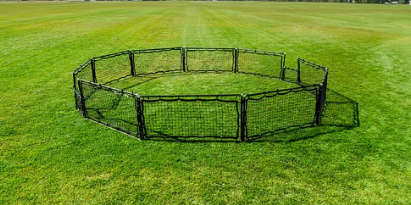In the kaleidoscope of traditional games from around the world, few are as captivating and culturally rich as peteca. Originating in Brazil, this ancient game blends elements of athleticism, artistry, and camaraderie into a unique and immersive experience. Join me as we embark on a journey through the history, cultural significance, and diverse forms of play that make peteca a beloved pastime across continents.

Unearthing the Origins
To truly appreciate peteca, we must delve into its roots, which trace back to indigenous communities in Brazil. Historians believe that peteca, also known as "jogo da peteca," has its origins in pre-Columbian times, where it was played by various indigenous tribes as a form of entertainment and ritualistic activity. Originally crafted from feathers and plant materials, the earliest petecas were simple yet elegant, reflecting the ingenuity and resourcefulness of their creators.
A Cultural Tapestry
As European colonization swept across Brazil, peteca evolved from a tribal pastime into a cultural phenomenon embraced by people from all walks of life. In the 19th century, peteca gained popularity among Brazilian elite circles, with formalized rules and competitions emerging in urban centers like Rio de Janeiro and São Paulo. The game became ingrained in Brazilian culture, celebrated for its accessibility, inclusivity, and emphasis on skill and teamwork.
The Anatomy of Peteca
At its core, peteca is a game of agility, coordination, and finesse. The object of the game is simple: players use a small shuttlecock, also called a peteca, to keep it aloft and pass it back and forth over a net. The peteca itself consists of a base made from rubber or cork, adorned with feathers or synthetic materials to provide stability and aerodynamic lift. With its unique design and construction, the peteca offers a balance of weight and flexibility, allowing players to perform a variety of tricks and maneuvers with precision.

Diverse Forms of Play
While the traditional form of peteca involves rallying the shuttlecock over a net, the game has evolved to encompass a wide range of variations and adaptations. In addition to standard singles and doubles matches, peteca enthusiasts have devised creative ways to play the game in diverse settings and contexts.
- Beach Peteca: On the sandy shores of Brazil's coastline, beach peteca takes center stage, with players enjoying the game's rhythmic pace and casual atmosphere. Against the backdrop of crashing waves and swaying palm trees, beachgoers gather to test their skills and soak up the sun, relishing the sense of freedom and camaraderie that defines this laid-back version of the game.
- Street Peteca: In urban neighborhoods and city squares, street peteca brings the game to the bustling streets and sidewalks, transforming everyday spaces into impromptu courts. Players adapt to the challenges of uneven terrain and limited space, improvising with makeshift boundaries and incorporating obstacles into their matches. Street peteca embodies the spirit of adaptability and resilience, showcasing the game's ability to thrive in diverse environments.
- Indoor Peteca: When the weather turns chilly or rain clouds loom overhead, indoor peteca offers a cozy alternative for enthusiasts eager to keep the game alive. Whether played in gymnasiums, community centers, or living rooms, indoor peteca emphasizes precision and control, with players navigating the confines of indoor spaces with finesse and agility. With its adaptable nature and minimal equipment requirements, indoor peteca provides a year-round outlet for players of all ages and skill levels.
Embracing the Spirit of Peteca
At its core, peteca transcends the boundaries of age, gender, and background, uniting players from diverse walks of life in the pursuit of fun and camaraderie. Whether played on sandy beaches, bustling streets, or indoor arenas, peteca embodies the essence of playfulness, creativity, and cultural heritage. As we celebrate the rich tapestry of traditional games from around the world, let us not forget the enduring legacy of peteca—a game that continues to captivate hearts and minds across continents, one shuttlecock at a time.
Here at Castle Sports we like to combine peteca with 9 square. Here's how to play.
9 Square is a popular game that has gained traction in recent years, captivating players of all ages with its fast-paced action and competitive edge. But what if we added a unique twist to this already exhilarating game? Imagine trading in the traditional ball for a peteca shuttlecock, infusing the game with the vibrant spirit of Brazilian culture and the artistry of this ancient sport.
Peteca, a game with roots dating back centuries, originated in Brazil among indigenous tribes as a form of ritualistic recreation. It involves hitting a feathered shuttlecock, also called a peteca, back and forth using only the hands. Over time, peteca evolved into a beloved pastime, captivating players with its blend of athleticism, precision, and camaraderie.
Now, picture a group of friends gathering around a 9 Square court, anticipation hanging thick in the air as they prepare for a game like no other. The familiar grid of nine square beckons, but instead of a ball, a colorful peteca shuttlecock takes center stage. The rules remain the same—players must hit the peteca into an opponent's square without it touching the ground—but the dynamics of the game are transformed by the unique characteristics of the shuttlecock.
With its feathered design and lightweight construction, the peteca adds an element of unpredictability to the game. Each strike sends it soaring through the air in graceful arcs, defying gravity with its buoyant flight. Players must adjust their timing and technique to account for the peteca's unique aerodynamics, mastering the delicate balance between power and finesse.
As the game unfolds, the court reverberates with the rhythmic sound of hands meeting shuttlecock, punctuated by shouts of triumph and groans of defeat. The peteca darts across the squares with lightning speed, testing the reflexes and agility of players as they leap and dive to keep it in play. Strategies emerge, alliances form, and rivalries ignite, fueling the competitive fire that burns within each participant.

But amidst the intensity of the game, there is also joy—joy in the camaraderie shared among friends, joy in the thrill of a well-executed play, and joy in the simple act of play itself. With every volley exchanged, bonds are strengthened, memories are forged, and the spirit of peteca lives on in the hearts of those who embrace its timeless appeal.
As the sun sets on another exhilarating match, players gather around, laughter mingling with the fading light as they reflect on the game's highs and lows. The peteca may have come to rest, but its legacy endures, inspiring a new generation to discover the magic of this ancient sport and the endless possibilities it holds. So next time you step onto the 9 Square court, consider trading in the ball for a peteca shuttlecock, and experience the game in a whole new light.
Peteca isn't just a game; it's a cultural treasure, a celebration of tradition, and a testament to the power of play to unite communities and enrich lives. As we honor its storied history and embrace its diverse forms of play, let us cherish the spirit of peteca and pass it on to future generations, ensuring that this timeless game continues to inspire and delight for years to come.







